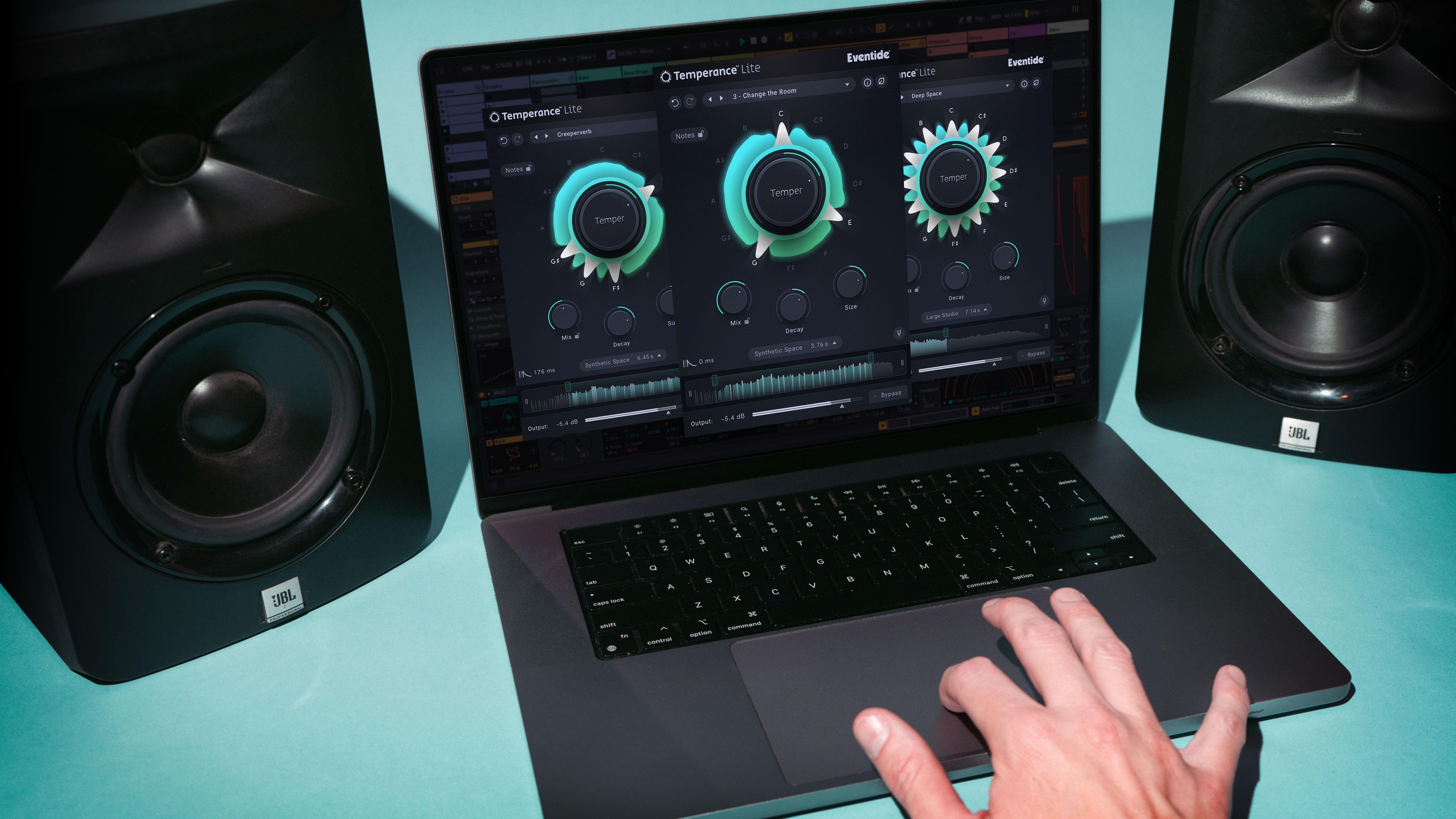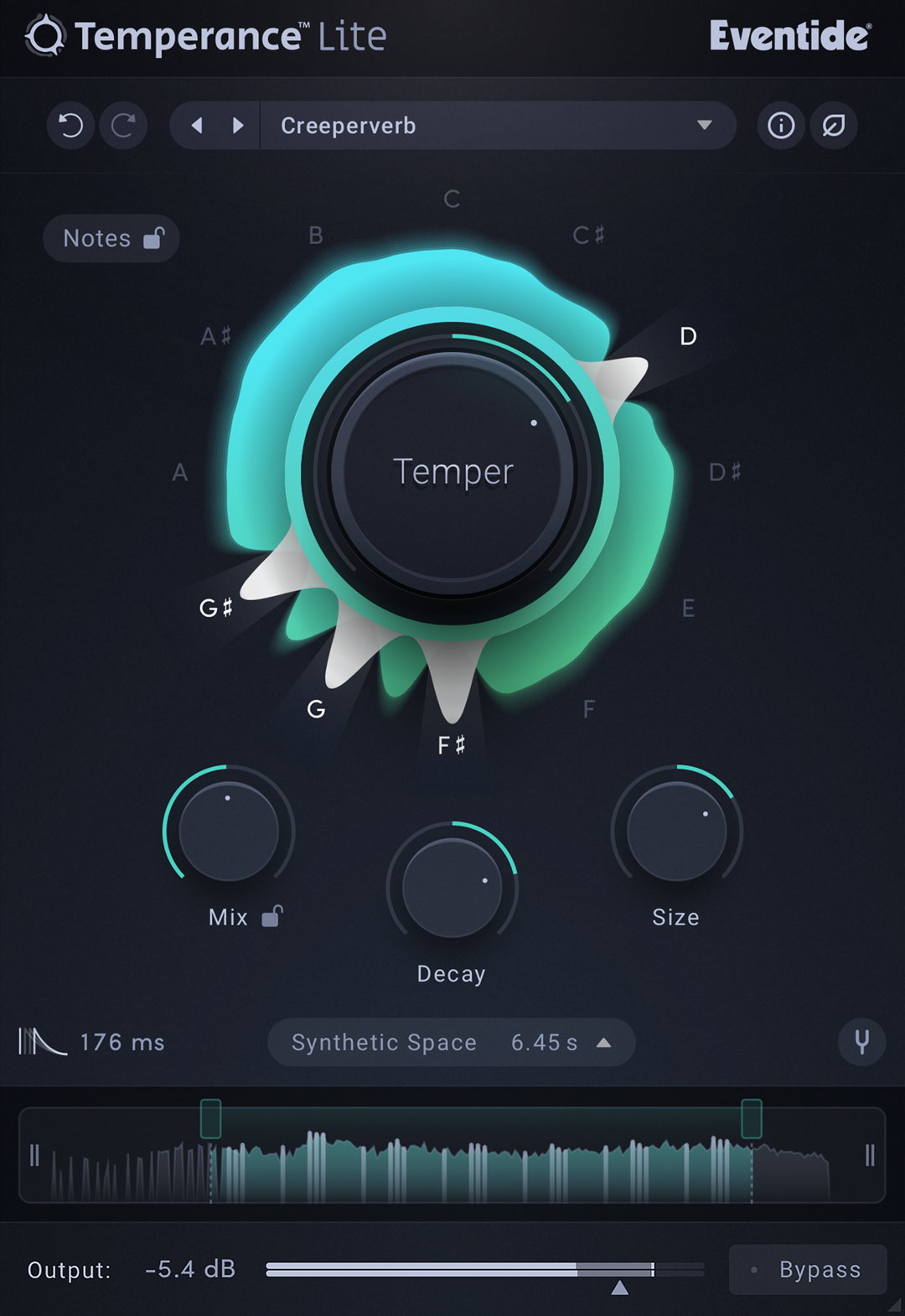Eventide’s Temperance Lite is a new modal reverb plugin that lets you tune your reverb tails – and it’s free until December 31
Temperance Lite's modal approach to reverb can emulate spatial characteristics with huge amounts of detail and customisation

Temperance Lite is a fantastic new reverb plugin from Eventide, which you can grab for free until the end of this year.
Temperance Lite is a little bit different from other reverbs in its use of modal technology. You might be familiar with the term ‘modal’ in the context of filters or physical modelling synths. What this modal tech does is emulate the overall shape of a space by breaking it down into thousands of different resonances.
Imagine each of those resonances like a tuning fork, which vibrates and creates a specific pitch. In this context we call this a ‘mode’. For each of these modes, Temperance Lite can control the frequency, decay time, volume level and phase.
When you combine thousands of these modes together, the interplay between them can emulate the complex way a real world space resonates, allowing us to emulate the characteristics of a space with huge amounts of detail and customisation.
This offers a level of control over the frequency spectrum that allows us to do some really interesting and creative things that wouldn’t be possible with algorithmic or convolution reverbs.

Pitch and frequency
The most interesting thing about modal reverb is that it allows us to emphasise resonances around certain musical pitches.
This is controlled by this central Tempering control. We can use these musical notes around the edge of the dial to select the notes we want to emphasise. The main Temper knob controls how much musical tempering is applied to the reverb.
By turning this to the right of centre, we can emphasise the selected notes, which can give our reverb a really musical quality that means it can act like an extra melodic element in a track. This can work particularly well for creating soundscapes and ambience.
If we turn Temper to the left of its central position, it de-emphasises the resonances around the selected note. This could be useful for creating reverb tails that stay out of the way of specific melodic elements of a track and create more space.
Down at the bottom of the UI, range controls let the user adjust the frequency range within our reverb that the tempering is applied to. These controls are overlaid on a spectral analyser that lets us see the frequency of the reverb’s wet output. At either end are low- and high-cut sliders that let us control the frequency of the wet signal.
Another handy visualisation tool is this NoteScape Visualizer around the edge of the Temper control, which gives us a real time visualisation of the pitches being emphasised.

Reverb tools
More conventional reverb tools also allow Temperance Lite to be used like a traditional spatial effect. Decay, Size and Mix let us alter the characteristics of the reverb and blend between the wet and dry signals. Over to the left of the UI is a pre-delay control.
Finally the Modal Response dropdown lets us alter the overall character of the reverb by selecting between three spaces:
Bright Room is a digital reverb based on the sound of Eventide’s SP2016 hardware.
Large Studio is based on the sound of a recording studio live room.
Synthetic Space is more of shimmery sound that uses a theoretical large space that causes higher frequencies to arrive slightly ahead of lower ones.
Temperance Lite comes with a stock of presets to get us started. In our video demo above, you can hear some of these in context of a track.
Temperance Lite is free until December 31 this year. Head to the Eventide website to claim your copy.
Want all the hottest music and gear news, reviews, deals, features and more, direct to your inbox? Sign up here.
